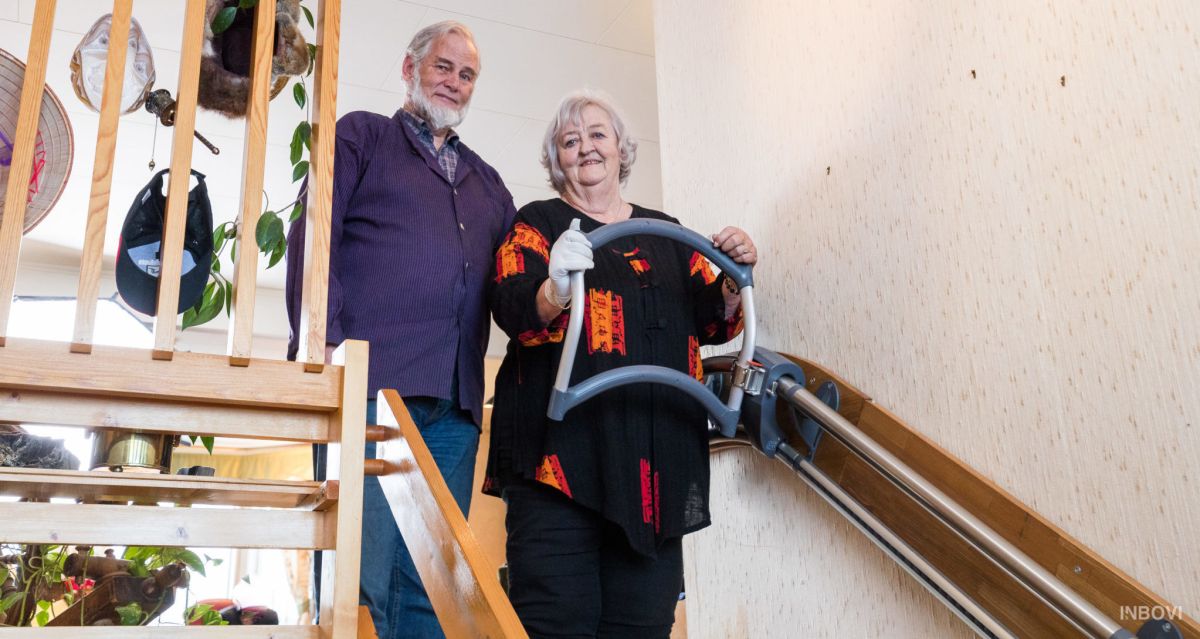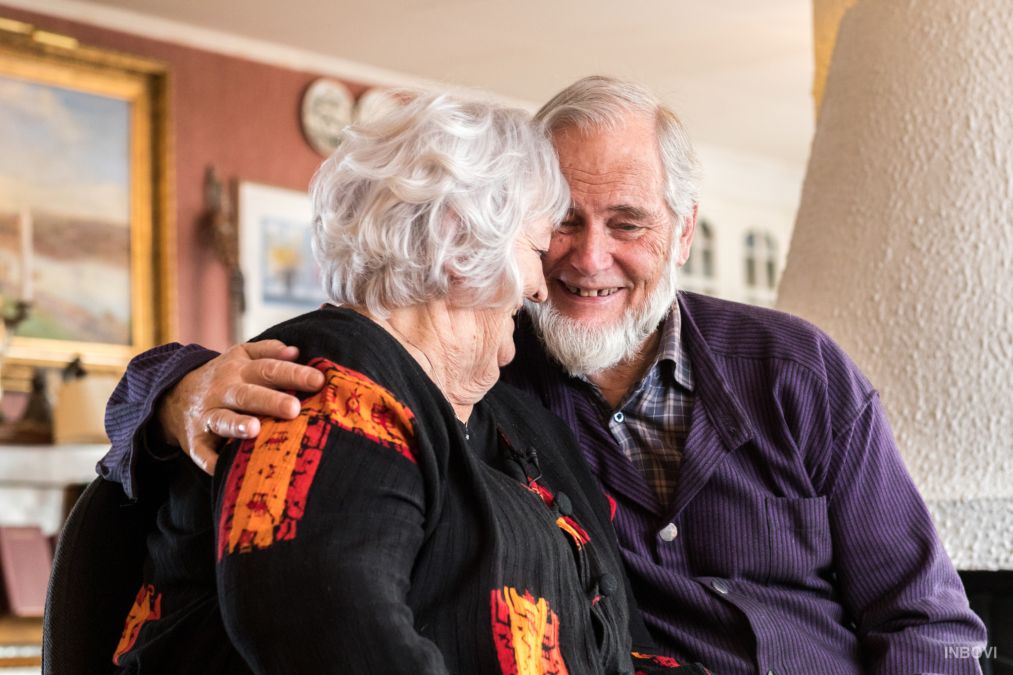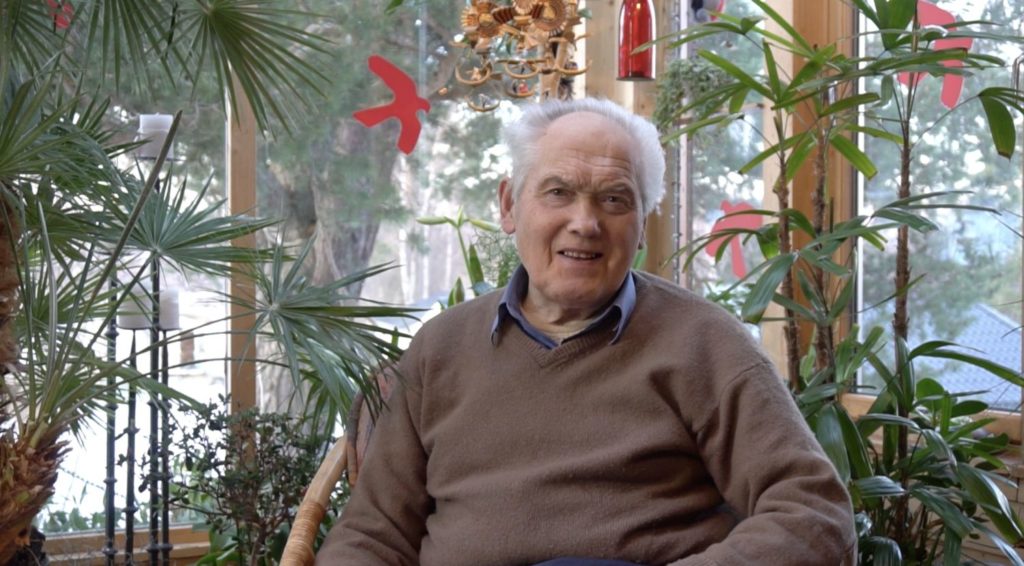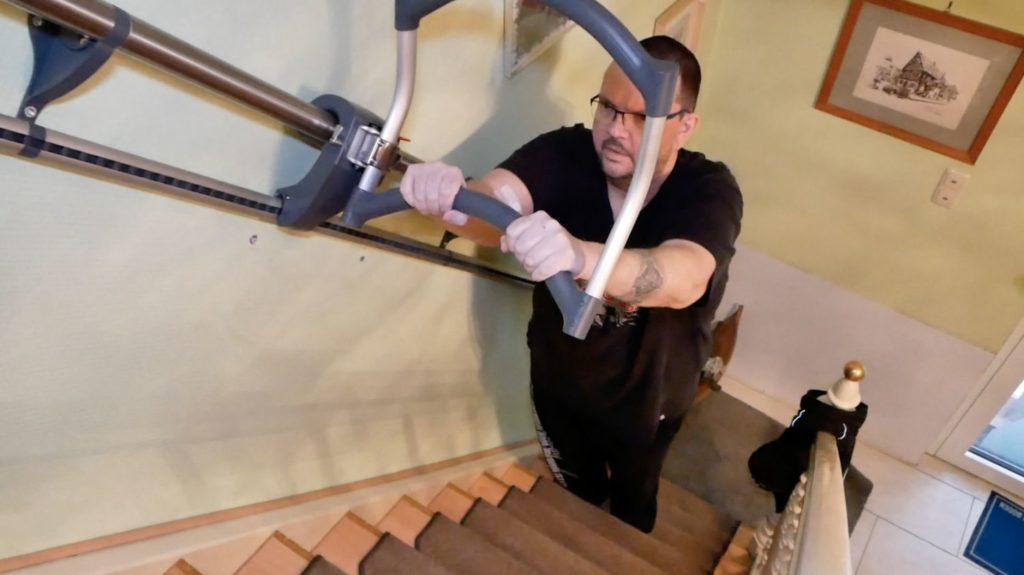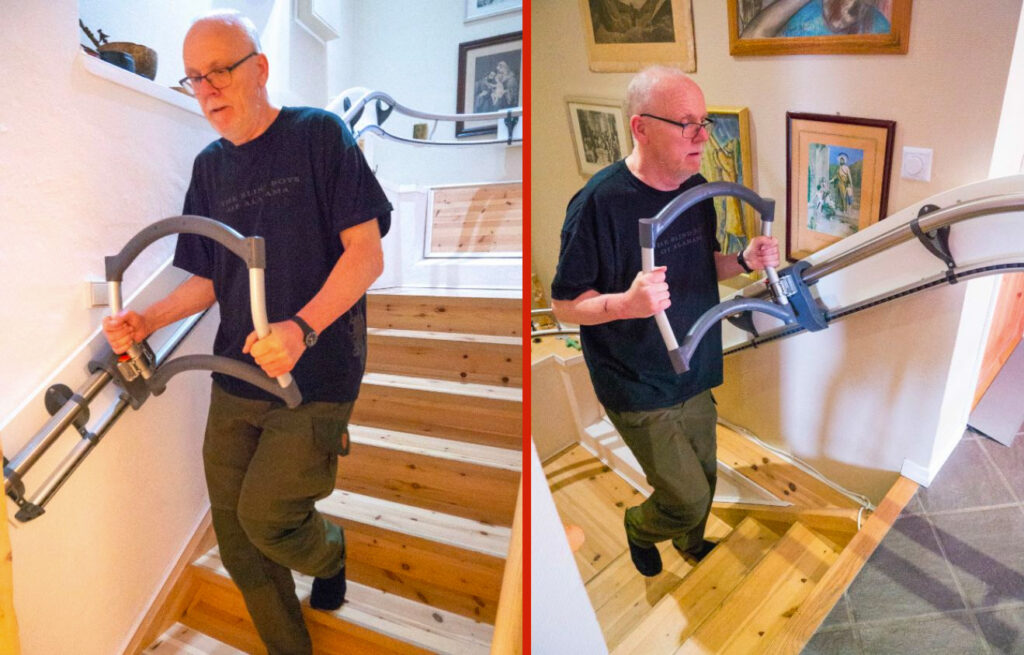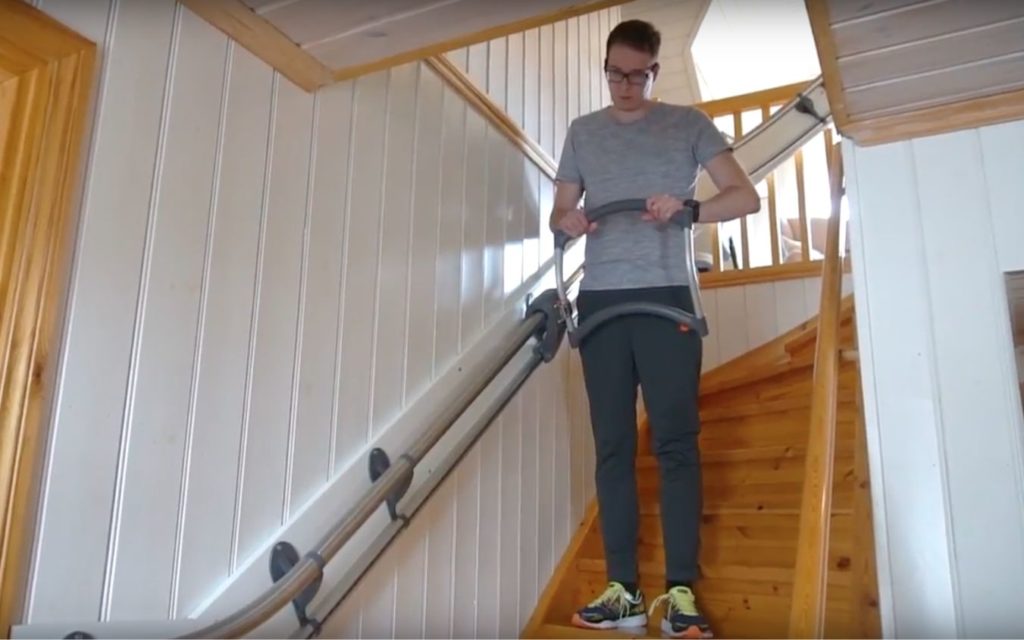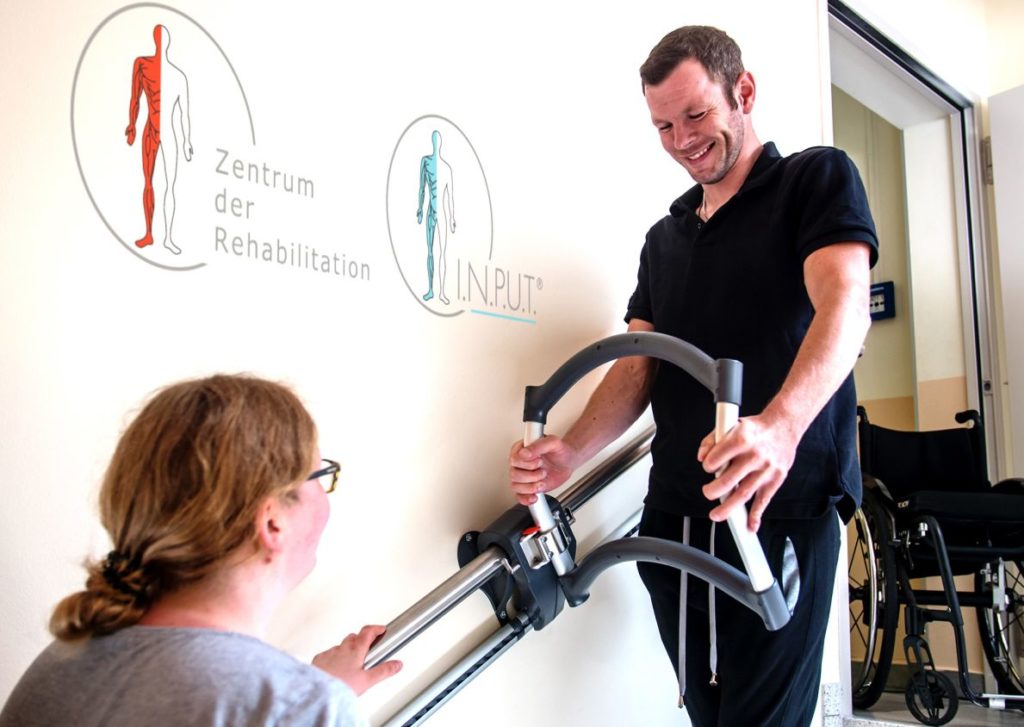
“Without the TOPRO Step stair climber, my wife and I would no longer be able to sleep upstairs together” – Edmund (77)
Edmund uses the stair climber after his stroke. He has lived all his life in a typical manor house (Trønderlån) in the Tröndelag region of Norway and the last thing he wants is to have to move. After working with his wife to make the house barrier-free with the help of various aids for stroke patients, such as the TOPRO Step stair climber, he is now able to cope with everyday life within his own four walls.

